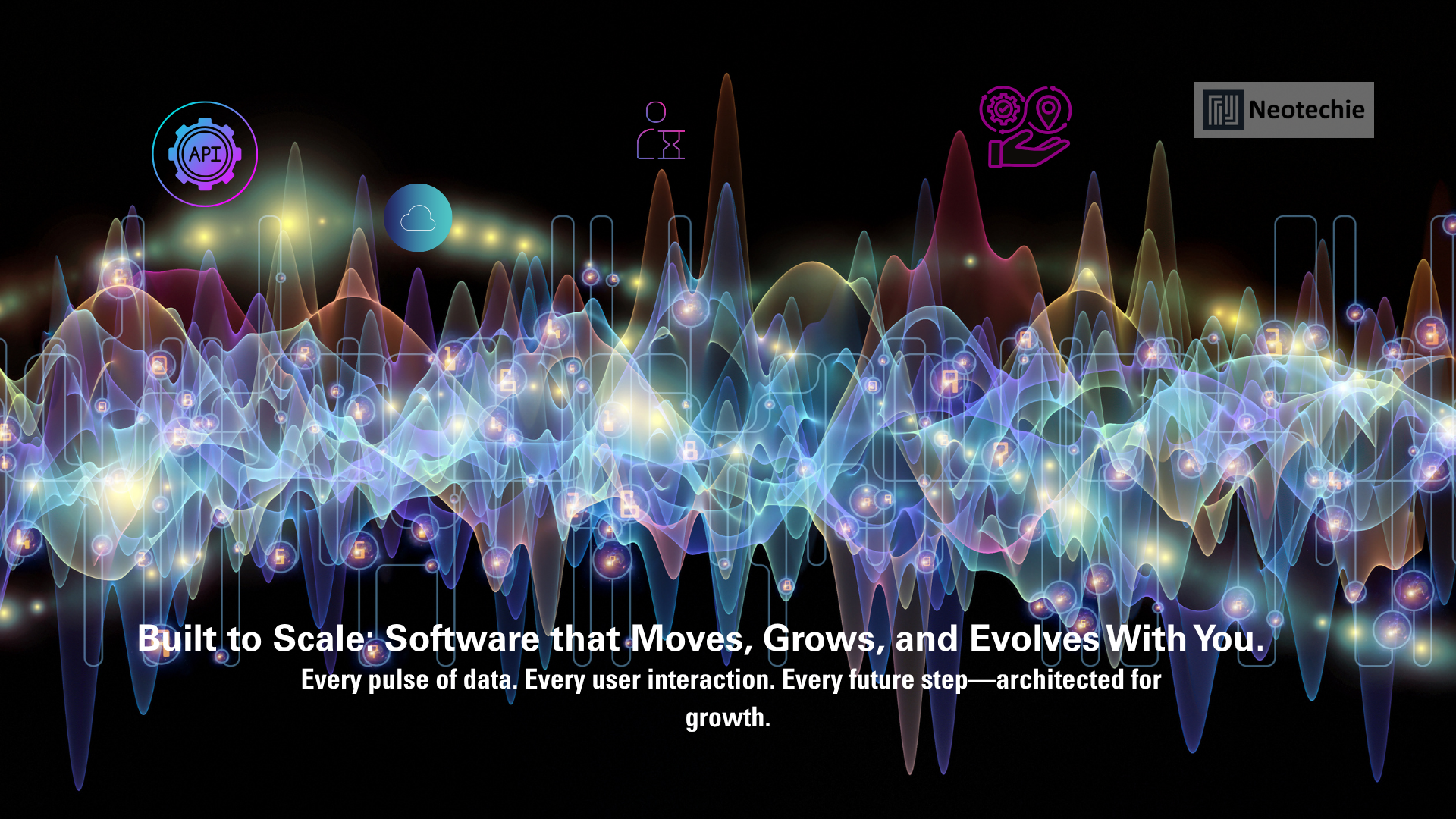Built to Scale: Engineering Software That Evolves With Your Business
Software isn’t just a product—it’s an evolving ecosystem. In an era where growth is unpredictable and change is constant, designing software that can scale is no longer optional—it’s essential. Whether your business is onboarding thousands of new users, expanding globally, or integrating next-gen features, your software architecture should be ready to respond without crumbling under pressure.
This comprehensive guide explores how scalable software design helps future-proof applications, support digital transformation, and empower long-term innovation.
Why Short-Term Software Thinking Falls Short
Businesses often race to launch an MVP (Minimum Viable Product) to meet immediate goals. But many of these applications are built on monolithic architectures with limited flexibility. When demand spikes, data grows, or teams scale, the cracks start to show.
Without Scalability:
- A retail app can’t handle traffic surges during flash sales.
- A SaaS platform breaks when onboarding enterprise clients.
- New features require weeks of rework due to tightly coupled code.
Scalability is about making sure your tech stack won’t hold back your growth—now or in the future.
The Building Blocks of Scalable Software Design
1. Modular Architecture
By breaking large systems into smaller, independent components, you gain the flexibility to build, test, deploy, and scale each module separately. This also makes troubleshooting and upgrades much easier.
2. Cloud-Native Infrastructure
Public cloud platforms like AWS, Google Cloud, and Microsoft Azure provide tools like autoscaling, serverless computing, and distributed databases—essential for building systems that respond dynamically to load changes.
3. API-First Development
By designing APIs before building backend logic, you create clear boundaries between services. This approach simplifies integrations, enhances security, and supports multi-platform expansion (web, mobile, IoT, etc.).
4. Asynchronous and Stateless Design
Handling non-essential tasks (notifications, processing, uploads) asynchronously reduces server load and improves user experience. Stateless services are easier to replicate, cache, and scale horizontally.
5. Smart Data Handling
Partitioning large datasets, leveraging in-memory caching, and separating read/write operations ensure your application performs well as data volume explodes.
Different Dimensions of Scalability
- Vertical Scalability: Enhancing the capacity of existing infrastructure (e.g., more CPU, memory).
- Horizontal Scalability: Adding more servers, containers, or resources to distribute workload.
- Functional Scalability: Adding new modules and features without impacting existing ones.
- Team Scalability: Supporting larger teams and workflows with role-based access and collaboration tools.
A truly scalable application considers all of these dimensions—not just server performance.
Why Scalable Design is Crucial for Business Transformation
1. Seamless Growth
Scalable architecture allows you to add users, products, and geographies without constant rework.
2. Faster Innovation Cycles
With modularity and CI/CD, your team can release new features quickly without destabilizing the core system.
3. Reduced Long-Term Costs
Avoid expensive rewrites or migrations by building with scalability in mind from the start.
4. Enhanced Reliability & Availability
Scalable systems are often more resilient, with redundancy and fault-tolerance baked in.
5. Business Agility & Competitive Edge
Scalable software enables companies to swiftly respond to market demands, customer expectations, and new technologies. This adaptability drives business transformation by unlocking opportunities for innovation, improving operational efficiency, and positioning the company as a forward-thinking leader in its industry. By leveraging scalable systems, businesses can pilot new offerings, optimize workflows, expand into new markets, adopt AI and automation initiatives faster, and roll out digital products and services at a pace that keeps them ahead of the competition. It also ensures smoother collaboration between departments and makes businesses less reliant on legacy infrastructure, further accelerating transformation.
Avoid These Pitfalls in Scalable Software Projects
- Premature Scaling: Don’t over-engineer too early. Let usage data guide your scaling strategy.
- Tight Coupling: Interconnected components are hard to isolate and scale.
- Neglecting Monitoring: Observability is crucial. Use metrics, logs, and tracing tools to catch issues before they impact users.
- Ignoring User Feedback: Real-world usage patterns should inform design adjustments.
Engineering Practices That Support Scale
- Containerization (Docker, Kubernetes): Portable environments that simplify testing and deployment.
- Load Balancing: Spreads user traffic to prevent overload on a single server.
- CI/CD Pipelines: Streamline integration, testing, and delivery for fast, reliable releases.
- Infrastructure as Code (IaC): Reproducible environments using Terraform or CloudFormation.
- Failover and Redundancy: Backup systems and automatic switchover in case of outages.
Real Business Impact of Scalable Design
When scalability is embedded into the foundation of your software, your business becomes:
- More Resilient: Able to handle traffic surges, system failures, or unexpected market shifts.
- More Agile: Ready to pivot with new features, services, or markets.
- More Trustworthy: Offering a seamless and stable experience at any scale.
- More Profitable: Lower tech debt and shorter delivery cycles mean better ROI.
Final Thoughts
Scalability isn’t a one-time choice—it’s a mindset. Building software that adapts as you grow gives you the confidence to take bold business steps without fear that your tech will fall behind. Whether you’re targeting your first 10,000 users or your next million, a scalable foundation ensures your product and vision can expand without limits.
Designed for Growth: How Neotechie Builds Software That Scales With Your Business
At Neotechie, we believe future-ready businesses need future-proof technology. That’s why our software development approach prioritizes scalability from the ground up.
We know your business won’t stand still—it will evolve, expand, and diversify. Our job is to ensure your software evolves right alongside it. From the start, we engineer systems that are both robust and flexible, using best-in-class practices like modular architecture, cloud-native technologies, and API-driven development.
Whether you’re adding new users, integrating emerging tools, or scaling across multiple regions, our solutions are built to handle it—all without compromising performance or reliability.
Our goal isn’t just to build what works now—but to build what keeps working as your business grows.

